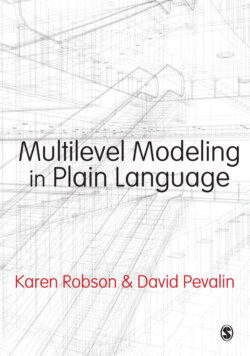Читать книгу Multilevel Modeling in Plain Language - Karen Robson - Страница 9
На сайте Литреса книга снята с продажи.
Theoretical reasons for multilevel modeling
ОглавлениеYour models should always be theory-driven, and the best model choice is one that corresponds to a sound theoretical rationale. One that is often overlooked is the general theoretical arguments around how the social world is portrayed. Education researchers, such as Bronfenbrenner (1977, 2001), have argued that the outcomes of individuals, particularly children, cannot be understood without taking different contexts into perspective. His ecological systems approach identifies a number of different contexts to be taken into consideration in terms of how they work independently and together to create the environments in which children live. By looking at data collected from individuals, we are focusing on the micro-level (i.e. individual) effects of specific characteristics on outcomes of interest, but it is more likely the case that these micro-level effects vary significantly across larger units at the meso (school or community) and macro (municipal or national) levels. The micro and the macro (and the micro and meso) interact. This theoretical perspective is most readily tested with statistical techniques that recognize these important distinctions.
Although discussions in this vein invariably resort to examples from education research, the applications and theoretical motivations apply across a range of disciplines, including health, political science, criminology, sociology, and management research. Scholars from all these disciplines have noted the importance of linking the individual (the micro) and the contexts in which he or she lives (the macro). The popularity of theories that focus exclusively on the individual or solely on higher levels (groups, firms, nations) is being overshadowed by approaches that try to mix the two and presumably give a more accurate depiction of the complexity of the social world.
